Did you ever notice a pattern in this nature? Do you see geometry and uniformity all around you? If you answered ?Yes?, congratulations! You have already tapped into a special dimension. But if you answered ?No?, don?t worry! You have finally reached the right space to dive deeper into the secrets of this universe. And you are about to open your eyes to this amusing ?Geometry? in nature, ?Spiral of life?.
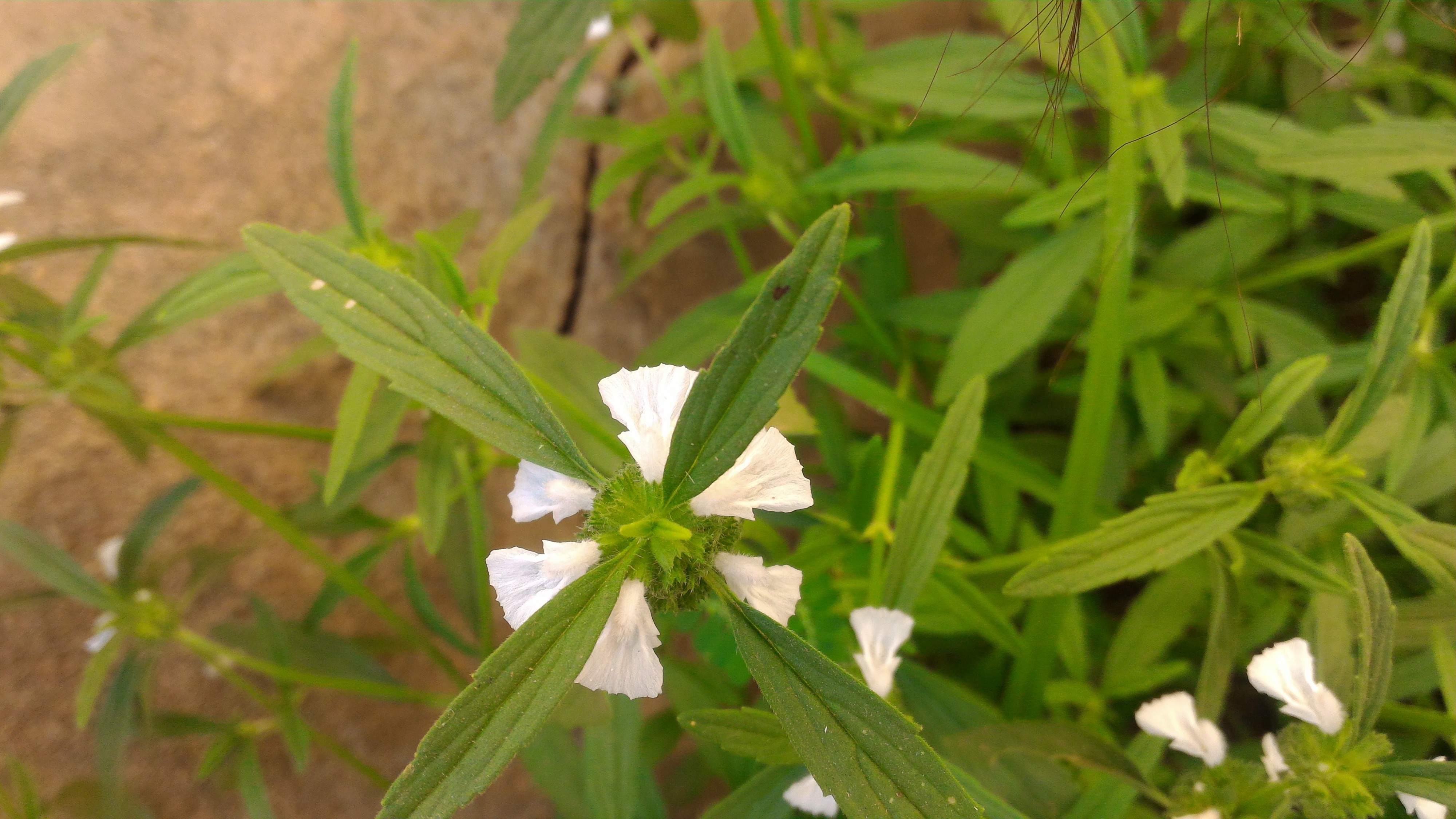
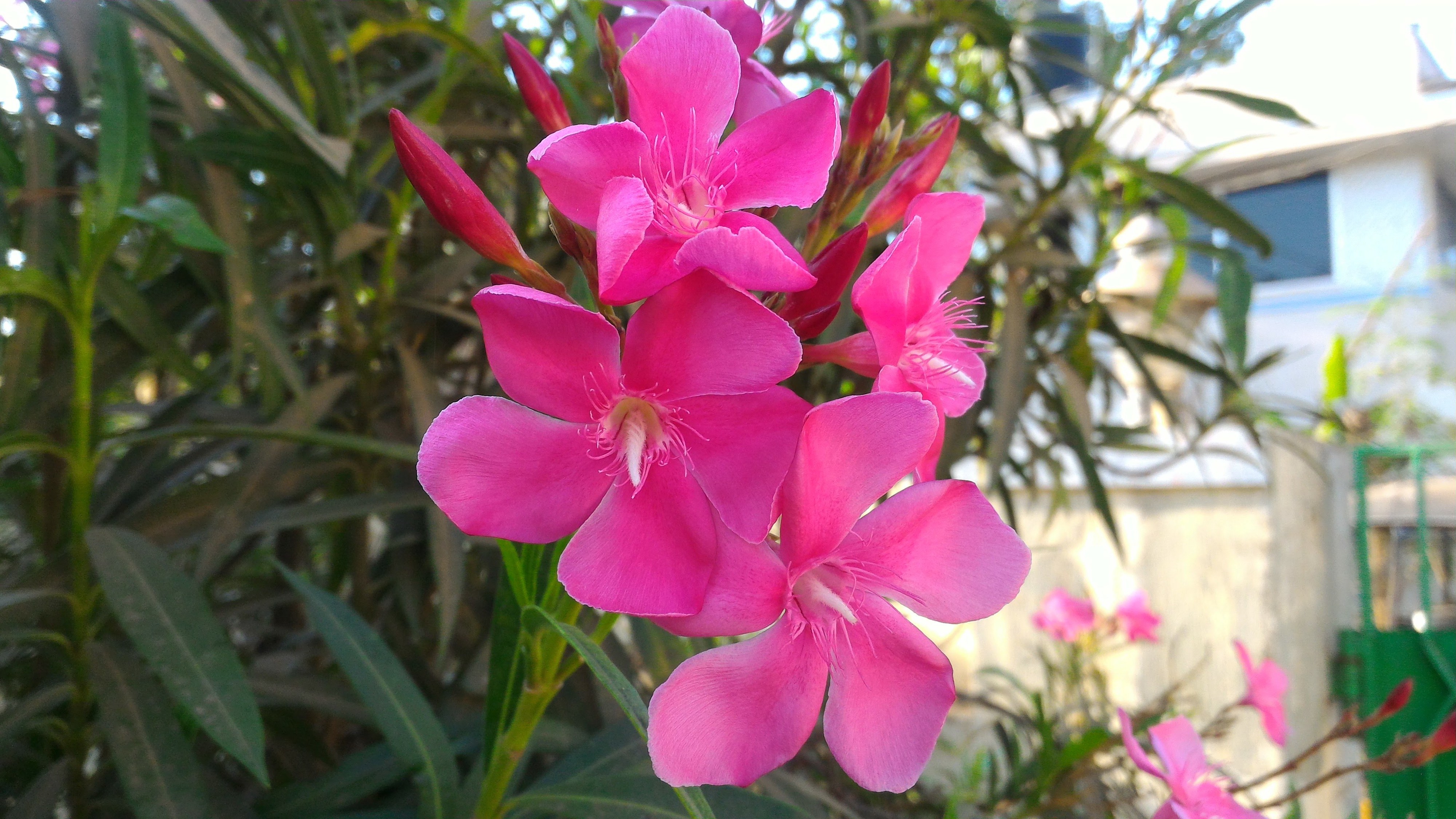 ?If you truly love nature, you will find beauty everywhere. Nature always wears the colors of the spirit. Look deep into nature, and then you will understand everything better.? ~Albert Einstein
?If you truly love nature, you will find beauty everywhere. Nature always wears the colors of the spirit. Look deep into nature, and then you will understand everything better.? ~Albert Einstein
Before I talk about the ?sacred geometry?, let?s lay some foundation for this knowledge to flow incessantly. Let?s look deeper into the patterns in flowers, plants, waves, spider webs, shells, snails, corals, human DNA, matted hair curls, beehives, and almost everything that we come across. Do you see any pattern yet?
Anything that we don?t interfere with, and is left in nature to grow organically, spirals in concentric circles. These spirals are everywhere in nature, right from human DNA to the galaxies, from simple to complex substances, from the microcosm to the macrocosm.
When we leave our hair undone for a while, it starts curling in spirals. Nobody teaches a flower to arrange its petals in concentric circles like a spiral. The spider weaves its web in spirals. And finally, our earth, sun, galaxy, and this whole universe is spiraling around and at the same time expanding forever. So what is it with this ?spiral? that is found everywhere in this nature?
 source: https://successvector.com/spirals-spiraling-into-change/
source: https://successvector.com/spirals-spiraling-into-change/
A spiral represents the ever-expanding universe. It is perceived to be the torque of the universe. It is a symbol of growth, evolution, and expansion. The spiral is also a symbol of cycles and rhythm in this nature. The creative life force or ?Prana? swirls the Akasha or the un-manifest universe into a continuum of solid forms of the manifested universe.
 https://bluelabyrinths.com/2015/03/19/why-do-spirals-exist-everywhere-in-nature/
https://bluelabyrinths.com/2015/03/19/why-do-spirals-exist-everywhere-in-nature/
Yay! You now started to see the spirals hidden in everything 🙂 Isn?t it fascinating how we are spiraling away in this universe and consequently forming spirals all around too? But is there any symmetry and order to these spirals? The answer is ?Yes?. Nature is so precise and extremely efficient. It has an innate order in everything that it creates. Let?s look into the spiral of life in detail and the geometry that follows.
Many spirals that appear in nature follow a golden ratio or a divine proportion. We start with two small squares of size 1 next to each other. We then draw a square of size 2 (=1+1) next to these two squares. We can now draw a new square ? touching both the unit squares and the latest square of side 2 ? so having sides 3 units long; and then another touching both the 2-square and the 3-square (which has sides of 5 units).
We can continue adding squares around the picture, each new square having a side which is as long as the sum of the latest two square?s sides.
 source: reddit.com
source: reddit.com
The spiral fits into the boxes drawn above perfectly. Each square is drawn, to exactly complement the previous square. The resulting numbers that we get are nothing but a ?Fibonacci sequence?.
The spirals in nature follow a specific pattern that obeys the Fibonacci sequence. The Fibonacci numbers are the sequence 0, 1, 1, 2, 3, 5, 8, 13, 21, 34, 55, 89, 144, 233, 377, 610,? where each number equals the sum of its two predecessors. This sequence pops up in a variety of natural phenomena all around the world including the growth of plants.

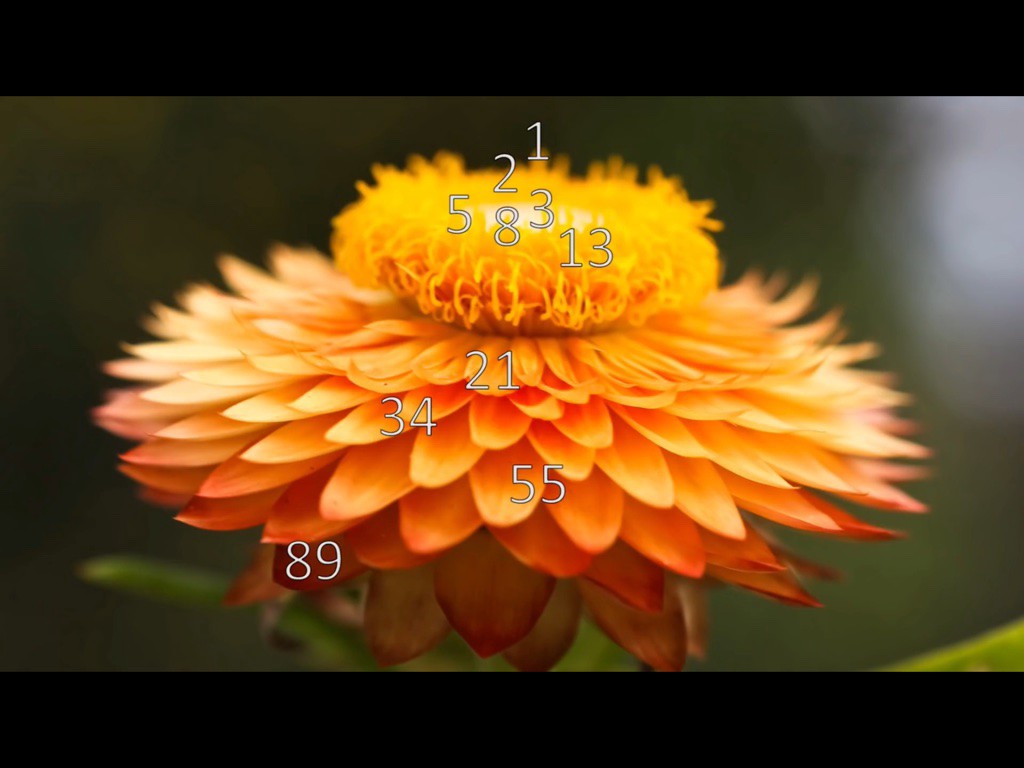
If we can witness a plant growing in a time-lapse video (https://youtu.be/eKo5F87A8a0), we get to see the ?dance of plant? that moves with the spiral of life. Most of the plants follow Fibonacci patterns in their arrangement of leaves or flowers around their stems. The flower petals and leaves are arranged so that the above ones do not hide the ones below them. This arrangement in nature facilitates each layer to get a good share of sunlight and each petal or leaf to catch the most rain to channel it down to the roots.
When we take any two successive (one after the other) Fibonacci Numbers, their ratio is very close to the Golden Ratio:
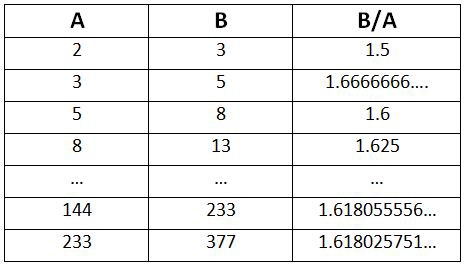
Greek letter phi (? or ?) represents the ?golden ratio?. It is an irrational number with a value of ? =1.6180339887
The ratio 1:1.618 is a ?golden ratio? which is found everywhere in the cosmos. This number has great significance in ancient art forms and architecture. Many ancient and modern buildings, sculptures, paintings, temples, structures use this ratio to create beauty and symmetry. Leonardo Da Vinci featured this ratio in many of his paintings. The Great Pyramid of Giza built in 4700 B.C. is found to be built according to the ?golden ratio.?
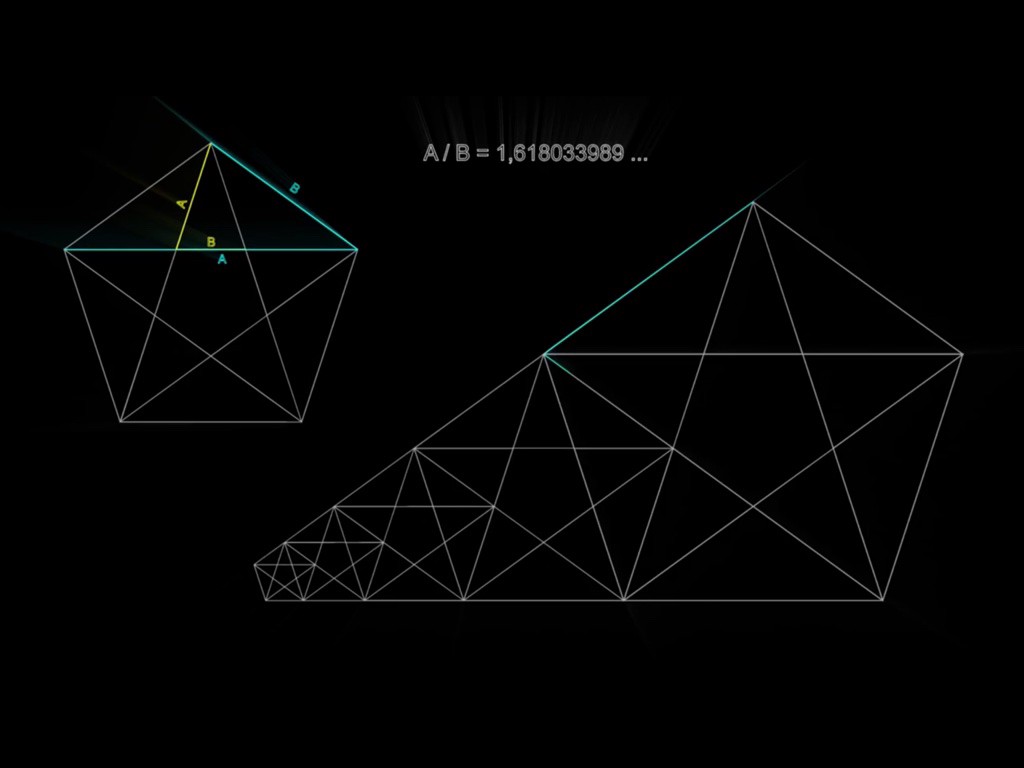 Golden ratio of a five-pointed star
Golden ratio of a five-pointed star
The human body also follows these proportions. The ratio from your navel to the top of your head and bottom of your feet is 1:1.618. The ratio of your forearm to your hand is 1.618 or the golden ratio. From the top of the head to the bottom of the chin the ratio is 1.618. Each section of your index finger, from the tip to the base of the wrist, is larger than the preceding one by about the Fibonacci ratio of 1.618.

The Fibonacci series appears in the fundamental aspects of music, beauty, and life. For centuries, this series has been in use especially by Indian poets & classical musicians. Certain triangles are also based on this ratio, such as the Pythagorean Theorem and finding the hypotenuse in a right-angled triangle. This type of triangle is also found in the Sri Yantra symbol, used in Hindu/Vedic meditation, and has existed for thousands of years. Its central triangles are based on the Golden Ratio.
 source: Wikipedia
source: Wikipedia
My relationship with the golden ratio and the sacred geometry dates back to my childhood days. It was hiding under the plain sight all along. My first encounter with the Golden ratio as I remember was as a kid intrigued by ?Sri Yantra?. I noticed the Sri yantra design for the first time near our pooja mandir (worship altar). I never understood why this yantra design was so different from other idols and statues of deities until I came across this profound knowledge of spirals, golden ratio and nature?s code of creation 🙂
It is amazing how our ancestors made the spirals and golden ratio a part of our daily life, in the form of sacred symbols and designs. For instance, in India especially in the southern half of the country, the womenfolk are used to drawing beautiful designs in front of their houses, or near a deity/idol or tulsi plant. The design would usually follow a Fibonacci sequence (2,3,5,8,13,21,34, and so on). We would also apply ?Mehendi? on all special occasions with various floral designs and patterns that can remind us of the golden ratio or the sacred proportion. More about the spirals and how it bridges the gap between art and science in my upcoming posts 🙂
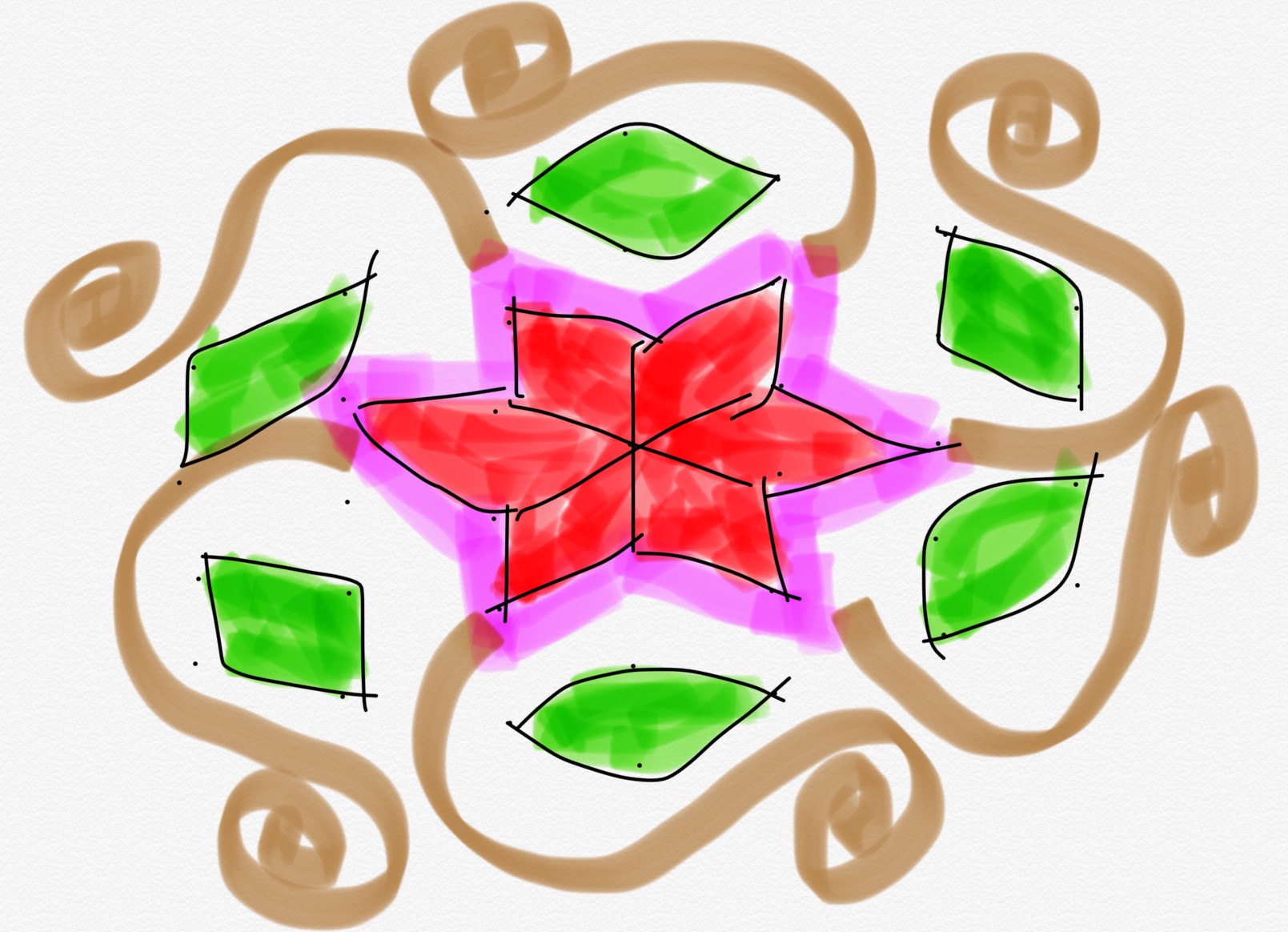 A simple Rangoli design I would make in front of my house that I still remember 🙂
A simple Rangoli design I would make in front of my house that I still remember 🙂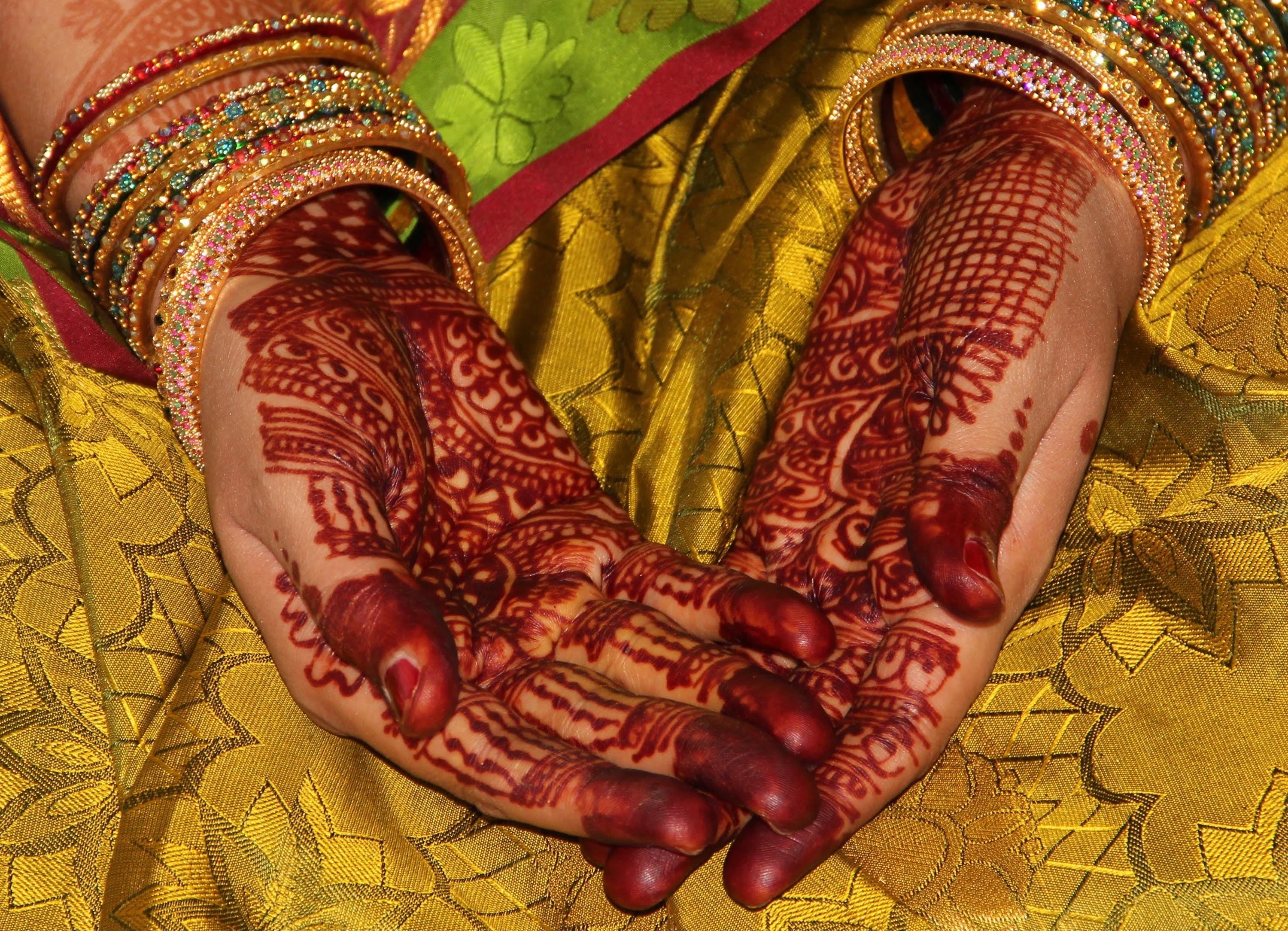 Mehendi on my hands 🙂
Mehendi on my hands 🙂
References:
Inner Worlds, Outer Worlds, a documentary film created by Daniel Schmidt


